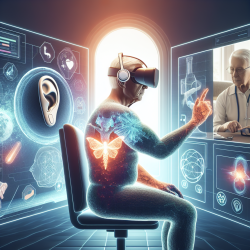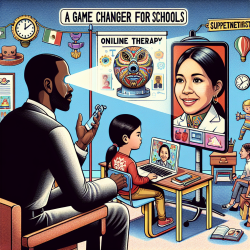Introduction
In an era where telehealth is becoming increasingly prevalent, the potential for at-home interventions to improve cognitive and mobility outcomes is promising. A recent study, "At-home computerized executive-function training to improve cognition and mobility in normal-hearing adults and older hearing aid users: a multi-centre, single-blinded randomized controlled trial," sheds light on how executive function training can be a game-changer, particularly for older adults and those using hearing aids.
The Study's Insights
The research conducted by Downey et al. (2023) involved a comprehensive trial across multiple sites, focusing on the efficacy of at-home cognitive training. Participants included normal-hearing middle-aged adults, older adults, and older hearing aid users. The study aimed to evaluate improvements in dual-task performance, which combines cognitive and motor tasks, under both laboratory and real-world simulated conditions.
Key Findings
- Enhanced Dual-Task Performance: The study found significant improvements in dual-task performance among participants who underwent executive function training compared to a control group.
- Greatest Benefits for Hearing Aid Users: Older adults using hearing aids showed the most substantial improvements, followed by normal-hearing older adults, and then middle-aged adults.
- Neural Plasticity: The research indicated changes in brain activity, suggesting neural plasticity as a result of the training, particularly in the prefrontal cortex, which is crucial for cognitive control.
Implications for Practitioners
For practitioners, these findings underscore the importance of incorporating cognitive training into therapeutic strategies, especially for older adults with hearing loss. The use of virtual reality environments and functional near-infrared spectroscopy (fNIRS) in the study highlights the potential for innovative, ecologically valid measurement techniques in clinical practice.
Encouragement for Further Research
While the study provides compelling evidence for the benefits of at-home cognitive training, it also opens the door for further research. Practitioners are encouraged to explore additional interventions that could complement cognitive training, such as physical exercises, to maximize patient outcomes.
Conclusion
The study by Downey et al. is a significant step forward in understanding how at-home cognitive training can improve both cognitive and mobility outcomes in older adults. By leveraging these insights, practitioners can enhance their therapeutic approaches, ultimately improving the quality of life for their patients.
To read the original research paper, please follow this link: At-home computerized executive-function training to improve cognition and mobility in normal-hearing adults and older hearing aid users: a multi-centre, single-blinded randomized controlled trial.










